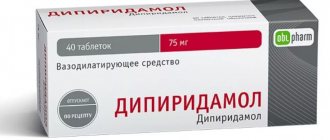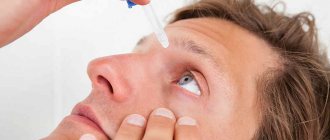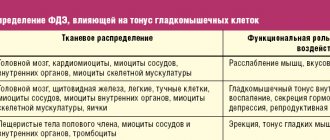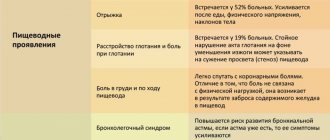Tranquilizers are classified as psychotropic drugs, since the main target of their action is the mental sphere and they are used to treat mental illnesses and painful conditions in healthy individuals. In addition to tranquilizers, psychotropic drugs include antipsychotics, antidepressants, mood stabilizers, nootropics and nervous system stimulants.
The first tranquilizer MEPROBOMAT
was synthesized in 1952. Thus, the history of the use of drugs in this group goes back more than 60 years.
Most drugs in this group, in addition to their sedative effect, have the ability to reduce muscle tension, make it easier to fall asleep, and stabilize autonomic reactions: palpitations, pressure surges, tremors, dizziness and headaches.
Tranquilizers
- a large group of drugs that are different in structure and mechanism of action, but what they have in common is a decrease in the excitability of the subcortical structures of the brain responsible for emotional reactions.
General restrictions for all drugs in this group are incompatibility with alcohol (they enhance each other’s effects), and prohibition on use by persons performing complex responsible actions that require increased concentration and instant reaction (drivers, pilots, machine operators, etc.) .
Depending on the chemical structure, tranquilizers are divided into several groups (according to M.D. Mashkovsky). List of tranquilizers by group:
BENZODIAZEPINES
One of the most common tranquilizers. They are widely used in the practice of psychiatrists, psychotherapists, psychiatrists - narcologists, neurologists, cardiologists, surgeons, anesthesiologists and resuscitators. With long-term use they can cause dependence (mental and physical). Benzodiazepine tranquilizers have a specific antagonist (a drug with the opposite effect) - FLUMAZENIL (anexate), which is used to stop breathing and loss of consciousness in cases of overdose and poisoning with benzodiazepines.
- Chlozepid (Librium, Radepur, Chlordiazepoxide, Elenium). The very first benzodiazepine tranquilizer with a strong sedative effect. Sibazon (Relanium, Relium, Seduxen, apaurin, diazepam).
- Bromodihydrochlorophenylbenzodiazepine (phenazepam, elzepam). Domestic development, widely distributed in the countries of the former USSR.
- Nozepam (tazepam, oxazepam).
- Lorazepam (calmese, loram, lorafen).
- Bromazepam (Lexilium).
- Mezapam (rudotel, medazepam).
- Gidazepam.
- Estazolam (nuctanol).
- Clorazepate (Tranxene).
- Clobazam (freesium).
- Alprazolam (Xanax, Zoldac, Neurol). One of the most powerful drugs in this group.
- Tetrazepam (myolostane).
- Tofisopam (Grandaxin). It is distinguished by its ability to have an activating effect.
Side effects and contraindications
Despite the fact that some tranquilizers are sold in pharmacies without a prescription, their use must be regulated (both in dosage and course duration). Uncontrolled use inevitably causes side effects, including:
- daytime sleepiness;
- general lethargy, lack of tone;
- muscle weakness;
- poor concentration;
- memory impairment;
- decreased performance;
- slowness of mental reactions;
- anxiety;
- insomnia;
- psychomotor agitation;
- paradoxical reactions;
- urinary retention;
- decreased sexual desire;
- nausea, vomiting;
- constipation;
- hypotension (low blood pressure).
In addition, it is worth considering that there are a number of contraindications to taking tranquilizers, including:
- pregnancy (especially the first trimester);
- lactation period;
- psychoses;
- myasthenia gravis;
- eye diseases;
- renal failure;
- liver damage;
- individual intolerance to individual components;
- children, teenagers and old age.
A more complete list of contraindications can be found in the instructions for the specific drug. Often it consists of 1-2 dozen different positions. Therefore, before using even an over-the-counter product, you should consult your doctor.
Use of tranquilizers
The main indications for taking these drugs are mild mental disorders and behavioral disorders:
- Neuroses. Neurosis-like conditions.
- Personality disorders.
- Anxiety disorders: panic attacks, phobias, generalized anxiety disorder, mixed anxiety and depressive disorder.
- Withdrawal state (withdrawal syndrome) with alcohol, nicotine, drug addiction, substance abuse and polydrug addiction.
- Depression with anxiety.
- Schizotypal disorder.
- Acute psychoses (in combination with other drugs).
- Consequences of organic damage to the central nervous system with mental disorders
- Behavioral disorders in children and adolescents.
- Insomnia.
- Eating disorders (anorexia, bulimia).
- Psychosomatic diseases: eczema, irritable bowel syndrome, “neurogenic bladder”, asthma attacks, hypertension and arrhythmia.
In addition, they are widely used in neurological practice: consequences of traumatic brain injuries, strokes with increased muscle tone, epilepsy, spinal osteochondrosis, etc. In therapeutic practice: functional disorders in the gastrointestinal tract, cardiovascular, urinary and other body systems.
Is it possible to take tranquilizers on your own without a doctor?
No. These are psychotropic drugs that have their own contraindications and limitations. Self-administration is life-threatening.
Can you buy tranquilizers without a prescription?
No. They are prescribed only on prescription by a doctor who has grounds for prescribing this drug. Two tranquilizers are prescribed on special strict reporting prescription forms (form 148 - 1/u - 88), these are sibazon and alprazolam.
What are the most powerful tranquilizers?
Sibazon and alprazolam.
What are daytime tranquilizers?
Since most tranquilizers tend to cause daytime sleepiness, drugs have been synthesized without this side effect. These include: gidazepam, clorazepate, tofisopam, hydroxyzine, mebicar.
What is the difference between tranquilizers and antidepressants? Do they have anything in common?
The difference between them is in the mechanisms of action (they act on different types of receptors). They have different therapeutic effects (anti-anxiety and antidepressant, respectively). Tranquilizers are often prescribed once or in short courses, antidepressants are prescribed for a long time, several months.
What they have in common is that they are all psychotropic drugs. Some drugs from these groups can give a hypnotic, sedative and anti-aggressive effect.
Mechanism of action of tranquilizers
The therapeutic mechanism of action of tranquilizers is the ability to influence the interneuronal transmission of nerve impulses in the diencephalon (intermediate) and spinal cord, reduce the activity of subcortical areas of the brain, reduce the level of dopamine and norepinephrine, as well as processes in the GABA systems of the brain, and block cholinergic receptors.
A feature of the therapeutic effect of tranquilizers is a calming effect on the central nervous system, excluding a pronounced antipsychotic effect. Therefore, they are widely used for mild (reversible) disorders of the central nervous system as an alternative to antipsychotic drugs.
The mechanism of action of tranquilizers depends on their chemical structure. Among anxiolytics, six classes of organic substances can be distinguished, represented by main chemical groups (according to the Anatomical Therapeutic Chemical Classification of Medicines, ATC):
- benzodiazepine derivatives;
- diphenylmethane derivatives;
- carbamates;
- dibenzo-bicyclo-octadiene derivatives;
- azaspirodecanedione derivatives;
- other anxiolytics.
The targets of anxiolytics are the following brain structures:
- limbic system of the hypothalamus;
- reticular formation of the brain stem,
- thalamic nuclei.
To date, the mechanism of action of tranquilizers of benzodiazepine derivatives has been well studied. Benzodiazepine receptors are involved in biochemical processes associated with GABAergic inhibition at all levels of the central nervous system. The versatile activity of tranquilizers is determined by their effect on various types of benzodiazepine receptors, thus allowing them to have anxiolytic, sedative, hypnotic, muscle relaxant and anticonvulsant effects.
Rice. 1. The mechanism of action of tranquilizers.
Anxiolytic (anti-anxiety) effect
The main task of tranquilizers is to provide an anxiolytic (anti-anxiety) effect: relieve anxiety, anxiety, fear (antiphobic effect), reduce emotional stress. In addition, anxiolytics help to cope with obsessive thoughts and hypochondria, irrational worries about one’s own health.
Tranquilizers are not antipsychotic drugs, so they do not relieve hallucinations, delusions, affective and productive disorders. Their therapeutic effect is aimed at other structures in the nervous system that are not responsible for the occurrence of such symptoms.
Sedative (calming) effect
Anxiolytics have a sedative (calming) effect, which is expressed in a decrease in hyperactivity, psychomotor excitability, speed of motor and mental reactions, and concentration. The sedative effect can be considered complementary to the anxiolytic.
Hypnotic effect
In case of sleep disorders (difficulties in falling asleep, in the presence of superficial sleep, sensitive to external stimuli, as well as short sleep, insufficient for restoration of strength), which, as a rule, arise against the background of mild and borderline mental disorders, tranquilizers help to cope with these conditions through a hypnotic (hypnotic) effect.
Muscle relaxant (relaxing) effect
In psychopathological conditions that cause tension in the skeletal muscles, muscle and motor excitation, the muscle relaxant (relaxing) effect of anxiolytics is useful. However, if the patient’s professional activity or lifestyle is associated with the need to maintain a rapid mental and physical reaction, strict selection of the drug in the correct dosage is necessary. Otherwise, a subjective feeling of lethargy and weakness may appear.
Anticonvulsant effect
The anticonvulsant effect of tranquilizers is usually used for conditions accompanied by epileptogenic activity. In particular, this effect finds therapeutic use in hysteroepilepsia (non-epileptic paroxysmal conditions), non-convulsive epilepsy, neuropsychogenic seizures (for example, breath holding, parasomnia, panic disorder, cardiogenic seizures, tension headaches).
Vegetative stabilizing effect
The therapeutic action profile of some tranquilizers includes a vegetative stabilizing effect - stabilizing the functional activity of the autonomic nervous system. When taking such drugs, autonomic manifestations of anxiety are stopped, for example: rapid heartbeat, high blood pressure, sweating, gastrointestinal disorders.
Rice. 2. The principle of prescribing tranquilizers.
Tranquilizers in neurology: pro and contra
Galina Mikhailovna Dyukova, neurologist, MD, professor of the Department of Nervous Diseases of the Federal Faculty of Physics, Moscow Medical Academy named after. I. M. Sechenov.
Tranquilizers are one of the most frequently prescribed drugs in neurological practice, but neither doctors nor patients should forget that they must be taken with great caution.
The World Health Organization does not recommend the use of tranquilizers for long-term treatment, as they can lead to physical dependence. The duration of treatment with tranquilizers should not exceed 1 month. However, WHO recommendations state that tranquilizers are used only for symptomatic and additional treatment.
Due to their wide range of clinical effects, tranquilizers are used in neurology to treat a number of syndromes:
- psycho-vegetative disorders (permanent and panic);
- pain syndromes (acute and chronic);
- sleep disorders and parasomnia (bruxism, sleepwalking, nightmares, movement disorders: restless legs syndrome, myoclonus, periodic leg movements in sleep, etc.);
- extrapyramidal disorders (tremor, dystonia, myoclonus);
- epileptic disorders (epileptic seizures);
- diseases of the neuromuscular system (rigid person syndrome).
Panic disorders
Tranquilizers are used to treat panic disorders only in the following cases:
1. As first aid to relieve a panic attack.
2. As a drug for course monotherapy, if:
- the duration of the disease is insignificant;
- agoraphobic syndrome and depression are absent.
3. If therapy with antidepressants is impossible due to:
- patient's reluctance;
- intolerance to antidepressants due to side effects;
- In case of combination of panic disorder with epileptic syndromes.
4. In combination with antidepressants:
- as an adjuvant to accelerate the clinical effect,
- for the correction of anxiety and panic disorders, the intensification of which is provoked by the start of taking antidepressants;
- if the dose of an antidepressant is insufficient, and its increase is limited by side effects.
Pain
Tranquilizers are used in neurology to treat both acute and chronic pain. They have a muscle relaxant, analgesic and anti-anxiety effect, due to which their therapeutic effect is formed and the prevention of chronic pain is ensured.
Dream
A number of benzodiazepine tranquilizers have a hypnotic effect and are used as hypnotics. Among them:
- midazolam (Dormikum),
- brotizolam (Lendormin),
- triazolam (Halcion),
- nitrozepam (Radedorm Eunoctin),
- flunitrozepam (Rohypnol),
- bromazepam (Lexotan),
- flurazepam (Dalmadorm).
The first three drugs have the shortest half-life, so they are the most effective and safe as a sleep aid.
Negative aspects of using tranquilizers
Tranquilizers may cause hypersedation. Its main symptoms are: daytime sleepiness, muscle relaxation, lethargy, unsystematic dizziness, psychomotor retardation, decreased concentration and reaction speed. In young people, hypersedation leads to decreased activity and causes difficulties in driving and performing professional duties. In old age, especially with cerebrovascular insufficiency, taking tranquilizers can lead to impaired coordination of movements, ataxia, disorientation and confusion.
In some patients, tranquilizers cause “paradoxical reactions,” that is, instead of a calming effect, they increase aggressiveness, agitation, and sleep disturbances. This effect is typical for impulsive and psychopathic individuals, patients who abuse alcohol or are prone to loss of self-control. In these cases, it is preferable to prescribe antipsychotics.
When taking tranquilizers, physical and psychological dependence can develop, up to the formation of substance abuse. The degree of risk of addiction depends on the drug, its dose, duration of use, withdrawal strategy and the personality of the patient. The risk increases in individuals prone to alcohol abuse, spontaneous increases in doses, and long-term and continuous use of the drug.
If the drug is prescribed incorrectly or is discontinued, o.s. syndrome may develop.
Withdrawal syndrome occurs when there is a sharp decrease in the concentration of the drug in the blood. At the same time, anxiety, irritability, insomnia, weakness, headache, muscle twitching and muscle pain, tremors, sweating, dizziness, nausea, loss of appetite, hypersensitivity to sensory stimuli, impaired perception, depersonalization, and sometimes confusion increase. To avoid withdrawal syndrome, the drug should be gradually withdrawn.
Predictors of withdrawal syndrome are:
- age over 60 years,
- a history of withdrawal symptoms after treatment with other drugs,
- long duration of treatment,
- rapid withdrawal of a high daily dose.
A “rebound phenomenon” may occur with the use of short-acting benzodiazepines. It is manifested by the appearance of anxiety and other symptoms of the disease in the intervals between doses of the drug. To avoid the “rebound phenomenon,” it is recommended to take the drug more frequently or replace it with a long-acting drug.
Features of the tranquilizer "Grandaxin"
Tofisopam (trade name Grandaxin) belongs to the group of benzodiazepine tranquilizers. Is a 2-3 benzodiazepine. Potentiates the binding of other (endogenous) benzodiazepines to benzodiazepine receptors.
Grandaxin has been known to neurologists for quite a long time - since the 80s of the last century. During this time, it has established itself as a drug with unique clinical properties:
- It does not have a sedative-hypnotic effect, but has a slight stimulating effect.
- Does not cause muscle relaxant effect.
- Particularly effective against autonomic disorders that accompany anxiety.
- It has very low toxicity and mild side effects.
- Does not cause either physical or mental dependence.
- There is no development of tolerance to the drug.
- No withdrawal syndrome noted.
In Russia, with the participation of Professor G. M. Dyukova, a large multicenter study was conducted on the effectiveness and tolerability of the tranquilizer Grandaxin (tofisopam) for psychovegetative disorders. The study involved 270 patients aged 18 to 55 years from 11 cities in Russia. The main group (n=162) took Grandaxin at a dose of 150 mg/day, the control group included 108 people.
A 28-day course of therapy with Grandaxin allowed to normalize psycho-vegetative imbalance, increase activity, quality of sleep and life of the subjects. In both groups, treatment had a positive effect on anxiety, however, in the main group, the anxiolytic effect was achieved already by the 2nd week of treatment, in contrast to patients in the control group, which was subjectively perceived by patients as an improvement in well-being, regression of the disease. During therapy with Grandaxin, there was a significant decrease in the level of autonomic dysfunction, noted by the patients themselves and according to objective assessments by doctors.
The supposed psychostimulant effect of Grandaxin was not confirmed by the study data. There was no need to reduce the dose or move it to the morning. An improvement in the quality of night sleep was noted in patients taking Grandaxin, which makes it possible to prescribe it to patients suffering from psychovegetative disorders in combination with insomnia disorders.
Thus, the good tolerability of the drug Grandaxin and the absence of adverse events during treatment allows the drug to be used at a dose of 150 mg/day in patients with both an isolated psycho-vegetative symptom complex and concomitant somatic and neurological pathologies.
Classification of tranquilizers
There are several classifications of anxiolytics - according to their chemical structure, as well as the mechanism and duration of their action.
Based on their mechanism of action, tranquilizers that are widely used in clinical practice are divided into the following classes:
- GABAergic receptor type A agonists: carbamates (meprobamate);
- barbiturates (phenobarbital);
- benzodiazepine derivatives (diazepam, chlordiazepoxide, lorazepam, phenazepam, gidazepam);
- triazolobenzodiazepines (alprazolam);
Benzodiazepines are further classified by duration of action into drugs:
- long-acting (24-48 hours): diazepam, chlordiazepoxide;
- medium duration of action (6-24 hours): alprazolam, lorazepam;
- short-acting (up to 6 hours): gidazepam, phenazepam.
Additionally, tranquilizers are classified into “night” (cause a pronounced hypnotic effect - for example, diazepam) and “daytime” (do not have a hypnotic effect - for example, gidazepam).
In addition to tranquilizers, many psychoactive substances can have a calming effect and reduce anxiety. These drugs include antidepressants, some antipsychotics, as well as antiarrhythmic and antihypertensive drugs (for example, the β-blocker propranolol) and antihistamines and antiallergic drugs (for example, diphenhydramine).
Magnesium preparations also have a calming effect: magnesium lactate - for oral administration, magnesium sulfate - intramuscularly.
pharmachologic effect
The vast majority of tranquilizers in one way or another activate the GABAergic system, enhancing the inhibitory effect of one of the mediators (signal transmitters) in the brain - gamma-aminobutyric acid (GABA).
Other anxiolytics reduce anxiety by activating serotonin 5-HT type 1A receptors.
A tranquilizing effect can also be achieved by blocking central histaminergic (H1) receptors.
Depending on the dose, almost all tranquilizers can cause sedative (in a low dose), anxiolytic and hypnotic (in a high dose) effects. In addition, certain tranquilizers reduce aggressiveness, lower muscle tone (relax muscles), and have an anticonvulsant effect.










